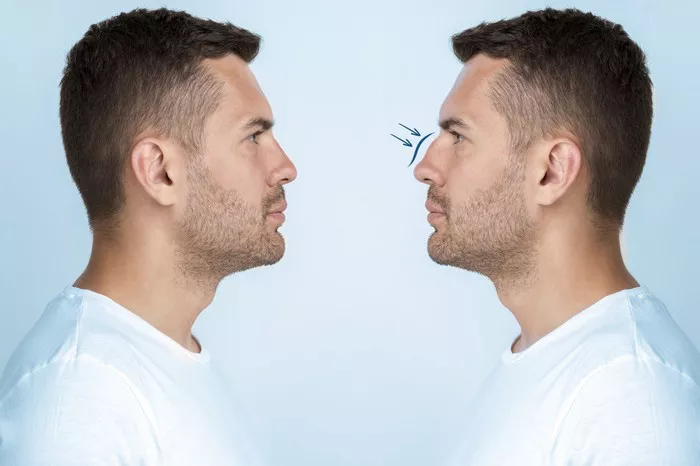Nose fillers have become a popular cosmetic procedure for those looking to enhance the appearance of their nose without undergoing surgery. While nose fillers are generally considered safe and effective, it is important to follow proper aftercare instructions to ensure the best possible results. In this article, we will provide a comprehensive guide on what not to do after nose fillers. We will cover the common mistakes that patients make after the procedure, and provide tips on how to properly care for your nose after receiving fillers.
What Not to Do After Nose Fillers:
Touch or Rub Your Nose: One of the most important things to avoid after receiving nose fillers is touching or rubbing your nose. This can cause the filler to shift or move, which can lead to an uneven appearance. It is important to avoid touching your nose for at least 24 hours after the procedure.
Exercise or Engage in Strenuous Activity: It is important to avoid exercise or any other strenuous activity for at least 24 hours after receiving nose fillers. This can cause an increase in blood flow to the nose, which can lead to swelling and bruising.
Wear Glasses or Sunglasses: It is important to avoid wearing glasses or sunglasses for at least 24 hours after receiving nose fillers. The pressure from the glasses can cause the filler to shift or move, which can lead to an uneven appearance.
Apply Makeup or Skincare Products: It is important to avoid applying makeup or any other skincare products to the nose for at least 24 hours after receiving fillers. This can cause irritation or infection, which can lead to complications.
Sleep on Your Stomach or Side: It is important to avoid sleeping on your stomach or side for at least 24 hours after receiving nose fillers. This can cause pressure on the nose, which can lead to swelling and bruising.
Proper Aftercare for Nose Fillers:
Apply Ice: Applying ice to the nose can help to reduce swelling and bruising after receiving fillers. It is important to apply ice for 10-15 minutes at a time, several times a day for the first 24-48 hours after the procedure.
Use Arnica Cream: Arnica cream can help to reduce swelling and bruising after receiving nose fillers. It is important to apply the cream as directed by your healthcare provider.
Avoid Sun Exposure: It is important to avoid sun exposure for at least 24 hours after receiving nose fillers. Sun exposure can cause the filler to break down more quickly, which can lead to an uneven appearance.
Stay Hydrated: Drinking plenty of water can help to reduce swelling and bruising after receiving nose fillers. It is important to drink at least 8-10 glasses of water per day for the first few days after the procedure.
Follow Up with Your Healthcare Provider: It is important to follow up with your healthcare provider after receiving nose fillers. They can monitor your progress and address any concerns or complications that may arise.
Complications of Nose Fillers:
While nose fillers are generally considered safe and effective, there are some potential complications that patients should be aware of. These include:
Infection: Infection can occur after receiving nose fillers, especially if proper aftercare instructions are not followed.
Allergic Reaction: Some patients may experience an allergic reaction to the filler material used in nose fillers.
Uneven Appearance: If the filler is not injected properly, it can lead to an uneven appearance or asymmetry.
Nerve Damage: In rare cases, nose fillers can cause nerve damage, which can lead to numbness or loss of sensation in the nose.
Migration: Nose fillers can migrate to other areas of the face, which can cause an uneven appearance or asymmetry.
Tips for Choosing a Qualified Healthcare Provider:
Choosing a qualified healthcare provider is essential for ensuring a safe and effective nose filler procedure. Some tips for choosing a qualified healthcare provider include:
Research: Do your research and choose a healthcare provider who has experience and expertise in performing nose filler procedures.
Credentials: Choose a healthcare provider who is board-certified and has the necessary credentials and certifications.
Reviews: Read reviews and testimonials from previous patients to get an idea of the provider’s reputation and track record.
Consultation: Schedule a consultation with the healthcare provider to discuss the procedure and ask any questions you may have.
Cost: While cost is an important factor to consider, it should not be the only factor. Choose a healthcare provider who offers a fair and reasonable price for their services.
Conclusion:
Nose fillers can be a safe and effective way to enhance the appearance of your nose without undergoing surgery. However, it is important to follow proper aftercare instructions to ensure the best possible results. This includes avoiding touching or rubbing your nose, avoiding exercise or strenuous activity, avoiding wearing glasses or sunglasses, avoiding applying makeup or skincare products, and avoiding sleeping on your stomach or side. It is also important to properly care for your nose after receiving fillers by applying ice, using Arnica cream, avoiding sun exposure, staying hydrated, and following up with your healthcare provider. If you experience any complications after receiving nose fillers, it is important to contact your healthcare provider immediately. Remember to choose a qualified healthcare provider who has experience and expertise in performing nose filler procedures.


